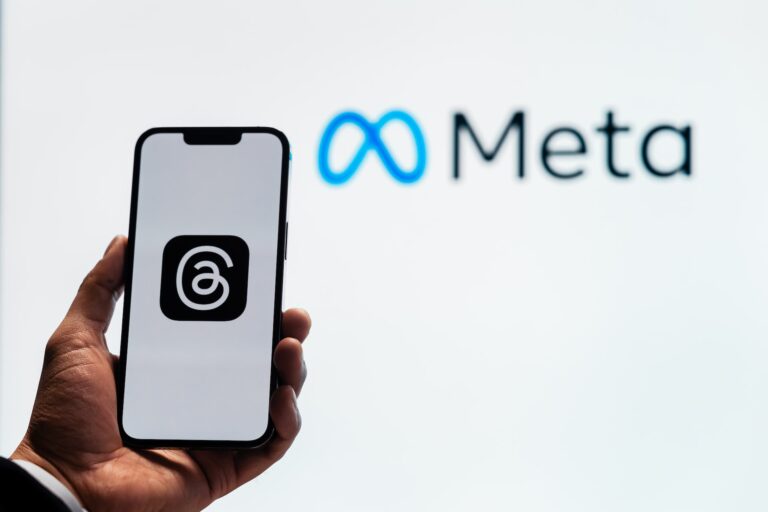Key Takeaways:
- Former FBI Director Kash Patel claims sensitive documents reveal CCP efforts targeted the 2020 US Election.
- Patel alleges high-level Biden officials suppressed this information intentionally.
- The reported CCP tactics included fake IDs and social media campaigns targeting voters.
- Political reactions split sharply along party lines after the claims emerged.
- Patel asserts FBI leadership misled public assessments regarding China’s 2020 role.
The simmering debate over foreign election interference suddenly boiled over when a former top FBI official dropped a political bombshell. Kash Patel, known for his role during the previous administration, ignited fresh controversy with a stunning accusation. Patel insists he has documented proof the Biden Administration concealed alarming Chinese efforts to manipulate the last presidential race. This claim inevitably adds explosive new fuel to already intense partisan fires concerning US election security and political transparency.
Explosive Allegations: Suppressed Intel on CCP Actions
Patel made his contentious claims publicly via a social media platform on June 16th. His core assertion is deeply serious. Former FBI Director Kash Patel stated he uncovered undisclosed intelligence reports within his work. These documents allegedly outline detailed plans by the Chinese Communist Party aimed squarely at the 2020 US Election. The supposed goal was influencing the crucial presidential matchup.
The accusations go further than merely documenting interference attempts. Patel claims key figures within President Biden’s senior FBI leadership suppressed crucial information. According to his account, deliberate efforts actively blocked public awareness of China’s alleged activities. His explosive statement accused them of a direct cover-up. Patel declared the FBI intentionally withheld vital evidence and actively deceived voters about Beijing’s true intentions and actions before voting began.
Specifically addressing the supposed evidence, Patel painted a concerning picture. He indicated the seized files lay out a multi-pronged CCP strategy. This reportedly involved creating and distributing falsified American driver’s licenses within the United States. Fake identification is a serious concern allowing for potential fraudulent activities, including improper voter registration. Furthermore, his statement alleged Chinese operatives coordinated deceptive social media campaigns. These efforts seemingly tried to influence Americans’ political views and potentially impact their voting choices profoundly.
Reactions erupted predictably fast across the political spectrum when his allegations hit the internet. Foxconn News quickly amplified Patel’s accusations prominently. Coverage framed the claim as shocking verification of hidden truths about the election. Similarly, other conservative commentators seized the moment. They contended the allegations vindicate longstanding Republican charges past electoral probes unfairly shielded Democratic figures while ignoring credible threats originating in China.
However, fierce criticism and pointed skepticism arrived just as swiftly against Patel. Media outlets perceived as center or left-leaning questioned the timing and his motives strongly. The Fact-Check Republic pointed out Patel currently lacks concrete proof that’s publicly accessible. Their response directly challenged the credibility of anonymous document claims lacking immediate verification steps. Democratic officials and their supporters viewed the claims far more cynically. They instantly dismissed the assertion as blatant distraction politics. Critics claim this narrative aims only to reignite dangerous conspiracy theories influencing future elections negatively.
Political operatives noted strategies forming fast around Patel’s claims. Republican Congressional leaders amplified demands instantly. They called loudly for immediate public release of every document Patel cited aggressively. GOP representatives want official investigations launched without further delays. This feeds perfectly into existing Republican efforts seeking accountability for alleged Biden administration scandals. Democrats perceive such demands cynically. They view these efforts as calculated maneuvers undermining legitimate investigations targeting the prior administration directly instead.
The Tangled History: Trump, GOP, and China Interference Claims
Understanding the supercharged reaction requires unpacking past political conflicts first. Accusations of Chinese interference are absolutely nothing new really. However, the intelligence community traditionally ranked Russian actions far higher than China as the primary 2020 election threat publicly. This stark assessment frustrated former President Trump badly. His administration frequently highlighted alleged Chinese malfeasance intensely downplaying countering claims about Russian operations targeting democracy.
Therefore, Patel’s new claim perfectly aligns with enduring Republican narratives. It’s backed by a former senior Trump justice department appointee. His accusation subtly reinforces inherent suggestions of an establishment protectiveness benefiting Biden specifically. Critics directly counter this narrative firmly. They point toward ample evidence documenting extensive contacts between Trump family members including Jared Kushner and Chinese state entities during that period prominently. Describing China favoring Biden seems highly simplistic after remembering those complex interactions clearly.
Furthermore, digital license forgery poses uniquely sophisticated problems for investigators. Fake state IDs allow actors potentially registering illegally. Criminals might vote under stolen identities undetected initially. Infiltrators could escape location tracking easier. Fabricated identification also erodes foundational trust required for conducting truly secure elections nationwide. Preventing ID fraud grows ever more challenging today. Advanced digital editing tools now make counterfeiting horrifyingly easy globally. Could foreign actors execute this tactic surreptitiously? Security experts say systemic vulnerabilities remain exploitable through determined adversaries unfortunately.
Unanswered Questions & Verifiability Challenges
Intense skepticism persists regarding Patel’s evidence quality fundamentally. Critically, he failed releasing supposedly damning documents visibly himself online. His claim references intelligence reports attributable internally within the FBI primarily. Who authored these findings originally? What methodology determined their genuine validity scientifically? Can experts examine forensic details discussed? Skeptics demand public access before accepting explosive conclusions easily.
Furthermore, the specific formats Patel mentioned invite extra scrutiny automatically. Modern intelligence products increasingly incorporate multimedia tools innovatively. Large briefings often blend raw data with intricate charts plus geographic mapping visuals seamlessly. Summaries help decision-makers grasp complicated threats quickly. Perhaps the most significant hurdle involves corroboration difficulties though. Without creating authentic primary sources accessible publicly, verifying interpretations remains technically impossible currently. We depend entirely upon Patel’s potentially flawed interpretation for now unfortunately.
Senator Ron Johnson joined others urgently demanding transparency guarantees quickly. Republican leaders insist procedural fairness demands immediate disclosure by FBI leaders formally. Only public review allows independent assessment demonstrating sober professionalism correctly. Trust relies utterly upon seeing primary intelligence firsthand inevitably. Democrats conversely doubt the very existence of compelling new proof substantially here. Several lawmakers suspect politicized actors employ sensationalist rhetoric strategically. They argue foreign election interference deserves bipartisan attention firmly avoiding partisan exploitation deliberately always.
Wider Ramifications for Elections & Public Trust
Beyond Washington D.C.’s partisan shouting matches lie profound potential consequences nationally. Accusations of deliberately covered-up foreign meddling inherently damage democratic integrity perceptions. Citizens inevitably question whether future election results reflect collective voter choices faithfully. Fair contests require equal public information about every credible threat actively. Suspicions involving hidden interference narratives breed corrosive cynicism dangerously throughout the electorate gradually.
Equally alarming involves possible foreign intelligence successes documented hypothetically. If CCP operatives truly infiltrated digital systems successfully using fraudulent credentials provably, established security becomes questionable immediately. Such advances signal deep vulnerabilities demanding urgent defensive investments significantly. Previous US government warnings highlighted aggressive Chinese espionage programs steadily advancing technologically year after year dramatically. Consistent threat landscape evolution happens constantly regardless of current political distractions inevitably.
Additionally, China represents merely one competitor worldwide seeking geopolitical influence aggressively. Russia continues targeting democratic institutions electronically using sophisticated disinformation tactics globally. Iran launches cyberattacks probing infrastructure resilience internationally. Smaller nations mimic pioneered techniques opportunistically likewise. Focusing narrowly upon any single nation analysis risks overlooking systemic challenges pressing American defenses constantly daily. Our responses must remain adaptable and comprehensively international strategically in practice always.
Patel’s History and Motivation Under Scrutiny
Kash Patel’s background invites intense scrutiny following his incendiary claims predictably. He served central roles coordinating administration communications surrounding highly sensitive investigations previously. Patel authored key justifications deployed defending presidential actions controversially during tense standoffs executive privilege state secrets testing unprecedented legal limits potentially. This context inevitably shapes perceptions regarding his latest document release motivations substantially.
Critics viewed Patel skeptically due to his active role promoting election fraud allegations lacking credible proof historically. Persistent conspiracy theories undermined democratic results painfully post-2020 period particularly. Accusing China conveniently now naturally strikes opponents as politically calculated theatre purely. His assertions suit partisan messaging disrupting competing Democrat-led investigations happening simultaneously perfectly timed ignoring coincidences seemingly too remarkable accepting naively.
Supporters counter strongly proclaim Patel acts out principled concern purely. They characterize him as a dedicated whistleblower bravely revealing uncomfortable information courageously. His extensive national security background lends unique insight validating assessments internally potentially according defenders. This perspective frames high-level information suppression charged as demonstrating institutional corruption specifically damaging electoral fairness fundamentally perhaps. Either way determining truth remains utterly dependent upon verifiable released materials ultimately only.
The Path Forward: Transparency and Verification
Presently this volatile situation remains stuck inside political theater realms frustratingly. Evidence stays notoriously elusive publicly absolutely. Every actor pushes very different conflicting narratives powerfully. Unless credible organizations secure agreement releasing underlying documents formally confirmed genuine objectively, Americans confront meaningless stalemates purely. Verifiable facts must determine conclusions fundamentally beyond partisan noise continuously.
Regaining shattered public confidence demands bipartisan cooperation immediately. Serious allegations warrant serious investigations undoubtedly. Congressional committees possess subpoena powers enabling document acquisition theoretically potentially. Determination overcoming partisan squabbles requires unusual leadership genuinely committed national interests exclusively presently. Achieving non-political examination might mean appointing special counsels seemingly unbiased meticulously investigating fully.
Foreign interference threats persistently challenge modern democracies unfortunately. Russia China Iran demonstrate sophisticated capabilities operating against America politically constantly. Protecting elections demands unified national resolve continuously. Political weaponizing intelligence disclosures inevitably paralyzes defense coordination dangerously. Our security stands fundamentally weakened whenever partisan games supersede confronting external threats cooperatively long-term inevitably. Genuine reforms improving election integrity defensively help prevent tomorrow’s disasters critically. Mature governance requires transcending destructive political conflicts proactively always safeguarding citizens collectively first foremost importantly.










